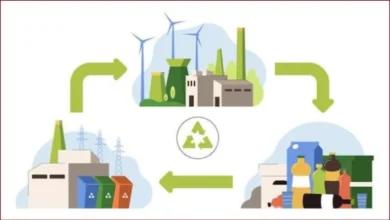Understanding Merchant Services and Payment Processing

Merchant services are relatively simple at their core. They take money from a customer’s wallet and put it into a merchant’s bank account.
However, it’s a completely different story with payment processing. Let’s take a closer look.
The History of Merchant Services and Payment Processing
A long time ago, everything was straightforward. You pulled out your wallet and handed physical cash to a merchant or vendor who deposited it in their bank account. Payment processing wasn’t necessary. The transaction happened person-to-person.
Cheques were introduced as signed instructions for the bank to transfer a certain amount of money from one account to another. It was a straightforward solution that allowed customers to make larger purchases, but it relied on the merchant’s trust as there was no proof the money was actually available.
Along comes the ATM machine. The ATM machine was created to cut bank costs. We’re talking about those thousands of tellers who lost their jobs. However, when people went to the ATM to get cash and then went to a store to spend it, retailers started to notice a different problem.
Customers would go to Walmart with $50 in cash to buy milk, eggs, and bread, but then see a big-screen TV on sale for $400. They couldn’t buy the TV because they only had $50 in their wallet.
Visa came along with a solution. They created a network that tied all the banks together. Instead of charging customers to use the ATMs, they charged business owners an interchange fee.
The idea of merchant services and payment processing is simple: there is money in a customer’s bank account, and we need to get that money into the business owner’s bank account. A merchant services agent plays a crucial role in facilitating this process by connecting businesses with the payment solutions they need to efficiently manage transactions.
The Nitty Gritty
Now, let’s go into details. The types of services that fit into that definition are expanding rapidly. In the payment processing world, we encounter several types of transactions, the most common ones being debit cards, credit cards, global money transfers and online processing.
- Debit Cards: When a customer pays using a debit card, the amount is deducted directly from their bank account. It’s like electronic check writing, making it a popular choice for everyday purchases.
- Credit Cards: Credit cards, on the other hand, involve borrowing money from a card issuer. The cardholder receives a monthly bill and has the option to pay in full or the minimum balance, usually with interest charges on the remaining balance.
- Digital Payments: Online payment processing has become increasingly prevalent due to the rise of e-commerce. It allows customers to pay for products and services through secure online platforms using various methods of payment, like credit cards, digital wallets, or bank transfers.
How Payment Processing Works
As mentioned earlier, merchant payment processing moves money from a customer’s bank account to a business’s bank account. Think of it as a three-step cycle.
- Authorisation: It begins with the merchant service, where the transaction is first authorised via the merchant’s point of sale, eCommerce website, or virtual terminal.
- Authentication: Next, the transaction is authenticated by the merchant’s payment processor, which uses the card’s brand network (for example, Mastercard) to tell the credit card’s issuing bank (for example, HSBC) to send the funds to the merchant.
- Settlement: Finally, during settlement, the funds are released to the merchant. Though the approval of the transaction happens within seconds, the merchant typically doesn’t receive funds in its business bank account until a couple of days later. It’s really as simple as that.
Now, let’s go over the main players involved in payment processing.
These are the merchant (you or your business), the issuing bank (the bank that issued the customer’s credit card), the card network (Visa, Mastercard, etc.), the merchant services, and the bank that the business has their merchant account with, which is called the acquiring bank.
Note that this is not necessarily the same bank you have your business bank account with. For example, if a customer uses a Barclays Visa card to make a purchase, Barclays is the issuing bank, and Visa is the card network.
If the business uses Stripe to take payments on its website, Stripe is its payment processor; Stripe uses multiple acquiring banks, such as Wells Fargo. Some credit card networks, including AMEX and Discover, act as their own issuing banks.
Wrap Up
Payment processing is the crucial step that facilitates the movement of money from a customer’s bank account to a business. It’s a fundamental process in the world of commerce, ensuring that transactions are swift, secure, and seamless.
Understanding how it works as a merchant and as a customer will prevent you from getting confused when you see your statement of account (SOA). So, if you want more tips about fintech, payments, and technology in general, check out our other blogs for more resources.



